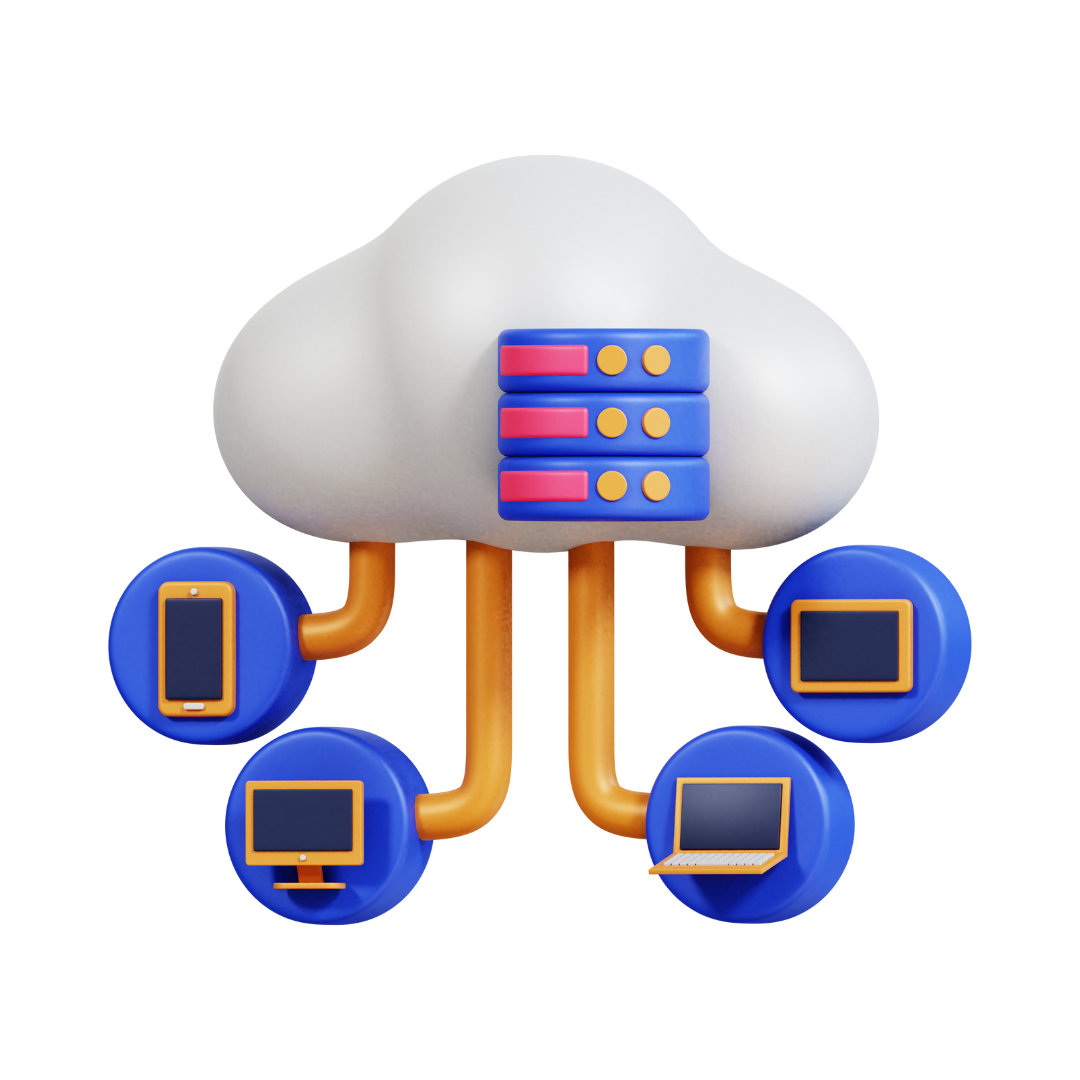Discover how you can protect your business on a budget in our guide.
Comprehensive cybersecurity doesn’t have to break the bank

Contents
Cybersecurity isn’t optional
SMEs suffer more than most during periods of economic downturn. Faced with rising costs and shrinking profit margins, business owners have no choice but to reduce operational expenses to keep their businesses afloat. And cybersecurity budgets are often first on the chopping block.
Many business leaders see any cybersecurity investment beyond the basic tools that come with Microsoft Windows as optional. A luxury, like a company holiday. But no matter what industry you work in, cybersecurity is business critical.
Cutting your cybersecurity budget is one of the biggest mistakes you can make. After all, you wouldn’t remove the locks on your office doors to save money, would you? The idea that robust cybersecurity comes at a premium persists, but perceptions are changing.
Read on to discover why cybersecurity is vital for SMEs during a recession, the common threats to be aware of, and how to get maximum value from your cybersecurity budget.
Cybercrime and recession
Why cybercrime goes up when the economy goes down

Studies show a clear relationship between economic instability and an increase in cybercrime. At the height of the 2009 recession, the UK saw a 40% rise in cyberattacks. The question is, why?
Corporate cutbacks
One of the biggest issues with reducing your cybersecurity budget is that it makes you more vulnerable to online threats. Cybercriminals are opportunistic. They know that many businesses will slash their cybersecurity budgets during a recession, and like any successful predator, they’re quick to exploit that weakness.
Similarly, staff redundancies can increase the pressure on employees. Stressed employees make more mistakes and are more likely to cut corners to stay on top of their mounting workload. Patch management can also suffer as the people responsible for monitoring, maintaining, and updating business systems are no longer around. This makes them the perfect target for social engineering attacks, like phishing emails, which work by generating a sense of panic or urgency to trick the victim into clicking on a spurious link or handing over their credentials.
40%
Cybercrime increased by 40% in the UK at the height of the 2009 recession
Unemployment
Cybercriminals aren’t immune to the effects of a recession. During periods of recession, cybercriminals often step up their efforts to protect their finances amidst rising costs and unemployment.
It’s easy to demonise hackers as predators who prey on less tech-savvy people or vulnerable businesses. But not all of them are career criminals. For example, a software developer who suddenly finds themselves unemployed may turn to cybercrime simply to make ends meet. Or an ex-employee may steal sensitive business data and sell it on the dark web to make some quick cash – possibly in retaliation for being made redundant.
Even non-techies can get in on the act, thanks to the growing trend of cybercrime-as-a-service. The ransomware affiliate marketplace, for example, allows people to execute ransomware attacks using existing tools that require little or no expertise to use. In return, they earn a percentage of the money gained from the attack.
The continuity imperative
SME business owners must make many tough decisions to in a recession. They’ll do anything to keep their business afloat, and that makes them the perfect target for ransomware attacks.
If they’re struggling financially, many businesses will simply pay the ransom because it’s better than the alternative: prolonged disruption, lost revenue, and public disclosure of potentially sensitive customer information. Cybercriminals know this, and deliberately target vulnerable SMEs.
Cybersecurity for SMEs
Why every business needs cybersecurity
Cybercrime is on the rise
Cyberattacks are becoming more frequent and easier to launch.
Automated tools and the ransomware as a service model mean perpetrators don’t need in-depth technical knowledge to execute a successful attack. And with SMEs conducting more of their business online, they’re more vulnerable to attack than ever.
What is ransomware as a service?
Ransomware as a service allows users – known as affiliates – to execute cyberattacks using pre-built software tools. Affiliates don’t need any technical knowledge or specialist tools. They simply pay a one-off fee or a monthly subscription to gain access to the software. Affiliates earn a percentage of the gains on each successful attack, while the ransomware’s author incurs less personal risk by distancing themselves from the attack.
Hackers don’t discriminate
Opportunistic attacks are far more common, and cybercriminals often target SMEs specifically because they don’t have the expensive and rigorous cybersecurity framework of a Fortune 500 company. To a hacker, SMEs are the low-hanging fruit.
A common misconception among SMEs is that they’re too small to attract attention. It simply isn’t worth the hacker’s time or resources to launch the kind of sophisticated attack you see on the news at a small business. So, they think they can get away with the most rudimentary defences. This is true to an extent, but these aren’t the attacks you should worry about.
Every business relies on tech
No matter your industry, you have some form of online presence. Even a one-person consultancy firm will have a business email address, if nothing else. And without proper protection, that makes them a potential target.
When we say proper protection, we don’t mean installing the most advanced antivirus software on the market or hiring an in-house cybersecurity team. Often, attacks happen because businesses run on outdated software and unpatched systems, resulting from poor cyber hygiene. A successful attack can have serious consequences that impact the business and its customers. For SMEs that run almost exclusively on third-party apps, it could even mean going out of business.
The human element
What do you picture when you think about cyber threats? Chances are, it’s a hooded youth sitting in front of a monitor in a dingy basement, forcing their way into a corporate system through a combination of skill and persistence. It’s a popular image, but one that doesn’t consider the human element of cybersecurity.
Human error is one of the biggest causes of data breaches. This could be because a careless employee who left their work phone unlocked on a table in Starbucks when they popped to the toilet or downloaded pirated software harbouring malware onto a company laptop. Disgruntled employees may also deliberately leak company data in retaliation for being made redundant.
Then there are social engineering attacks that target humans instead of computer systems to steal business data, encrypt files, or install malicious software on corporate networks.
Supply chain risks
77% of SMEs are part of a supply chain. Yet few businesses evaluate their suppliers’ cybersecurity controls and strategies during the tender process.
This is a problem because supply chains have become a popular target for cybercriminals. As demonstrated by high-profile incidents like the SolarWinds attack of 2020, all it takes is one weak link in the chain to put you and other connected businesses at risk.
How much does a Cybersecurity breach cost?
According to the latest government statistics, the average cyberattack costs UK SMEs £4,200. This figure includes costs associated with recovering stolen or encrypted data and lost revenue due to prolonged disruption.
However, this estimate doesn’t factor in potential financial penalties or the reputational damage that may follow an attack. 19% of consumers won’t shop with an e-commerce store that’s suffered a breach, which has a noticeable impact on your bottom line.
31%
of UK SMEs polled in a recent government survey said they were attacked at least once a week in 2022.
82%
of data breaches involve a human element.
13%
Only 13% of businesses assess supplier risks posed by their immediate suppliers.
The 4 biggest cyber threats to SMEs




Phishing
A popular form of social engineering, phishing attacks trick people into handing over information or installing malicious software on their computers. Scammers achieve this by creating panic or impersonating a person or business the victim recognises.
Hacking
Hacking describes a range of attacks in which a hacker breaks into your computer network to access your data and systems. Hackers typically gain access through malicious software, like spyware, or via a brute force attack, like credential stuffing.
In a credential stuffing attack, the perpetrator uses stolen account information – typically a list of usernames and passwords purchased off the dark web or obtained in a previous breach – to access other accounts belonging to the victim. Some hackers use automated bots to test username and password combinations until they get a match. Credential stuffing leaves little to no trace and is highly effective because many people reuse the same password on multiple accounts.
RansomwareRansomware is a type of malicious software that infects the victim’s computer, typically though an email attachment or link. One of the most common and effective attack vectors, ransomware encrypts the victim’s files or threats to release confidential information unless the victim pays a ransom – usually in the form of cryptocurrency, which is harder to track.
What makes ransomware particularly nasty is that there’s no guarantee the hacker will keep their word once the victim pays. In recent years, cases of double extortion attacks – in which the perpetrator launches a second strike immediately after the first – have risen considerably. Aside from the financial repercussions, ransomware attacks can erode trust and seriously damage your brand.
Distributed denial of service
Also known as distributed network attacks, distributed denial of service (DDoS) barrages your network resources, such as web servers, with multiple requests. Because network resources have limited capacity, and the channels that connect them have finite bandwidth, DDoS attacks prevent your website from functioning correctly. This results in frustrated customers and lost revenue.
What to protect and how to protect it
Key areas to focus your cybersecurity investment





NetworkYour network is the gateway to your business. It’s the channel that connects the disparate endpoints in the hybrid workplace, ensuring people can work effectively, no matter where in the world they are.
Once a hacker gets past your network, they have access to everything – from sensitive company and customer data to intellectual property.
How to protect your network
- Install a network firewall to filter network traffic
- Use a virtual private network (VPN) to encrypt network traffic
- Segment your network to remove single points of failure vulnerabilities
- Regularly update your router’s firmware
DatabasesWhether you store data locally, on the cloud, or a combination of the two, securing your databases helps to prevent breaches. Company and customer data is an enticing target for cybercriminals, with stolen data worth millions on the dark web. Recovering or replacing stolen data isn’t the only issue. Data breaches can result in hefty fines and harm your reputation.
How to protect your data
- Encrypt your data
- Install identity management software to verify access requests and ensure users can only access the data they need
- Monitor and update applications to patch vulnerabilities
- Use secure passwords and multi-factor authentication
- Configure your cloud properly – don’t assume the default setup is correct!
Employee devices
Hybrid working allows employees to work effectively from anywhere. In the office, at home, during the morning commute. All they need is a device, a stable internet connection, and access to the company network. However, this freedom and flexibility adds an extra layer of complexity for IT teams.
The most rigorous cybersecurity policy in the world can’t stop an absent-minded employee from leaving their laptop on a busy commuter train. If the device falls into the wrong hands, it can open your business to attack.
How to protect your devices
- Use secure passwords and multi-factor authentication to prevent unauthorised device and account access
- Regularly update your antivirus software to protect against common cyber threats
- Enable remote data wiping so administrators can delete sensitive data from lost or stolen devices
- Install full-disk decryption on company devices so hackers can’t access the hard drive without the password
- Run cybersecurity awareness training to instil best practices in your team
3 tips to help you maximise your cybersecurity budget
How to keep cybersecurity costs in check




Evaluate cybersecurity solutions thoroughly before buyingInvesting in the best cybersecurity solutions doesn’t mean you’re bulletproof. Everything from the assets you want to protect to the size of your business and the industry you work in will determine the best solution for you.
Before committing to a solution based on the elevator pitch, look deeper at:
- The features it offers
- Management and maintenance requirements
- Monthly costs
- Support services
For example, investing in a cutting-edge, automated solution will be a waste of money if you don’t have the internal expertise to configure the software properly on keep on top of updates.
Consolidate your toolsMore isn’t always better when it comes to cybersecurity. Research from the Ponemon Institute found that enterprises with over 50 cybersecurity tools are less able to detect and respond to attacks than those with fewer solutions.
It’s simple, more tools means more complexity. Multiple providers. Multiple invoices. Multiple onboarding and training sessions for each tool. Additionally, using multiple cybersecurity tools increases the number of potential weaknesses in your security framework, as you’ll need to manage and update each solution separately.
There’s a financial cost to using multiple tools, too. Although different solutions have different capabilities, some features will inevitably overlap. This essentially means you end up paying for the same service twice.
It’s impossible to find a single solution that has all the features you require. But consolidating your cybersecurity framework into as few tools as possible will help to reduce costs without compromising your business.
Get Cyber Essentials certified
Effective cybersecurity is about creating a solid baseline that protects your SME against the most common threats – not creating an action plan for every eventuality. That’s what the government’s Cyber Essentials scheme aims to do.
Cyber Essentials provides stronger security without the cost of hiring internal experts. It’s built around five simple technical controls, which are:
- Use a firewall to secure your internet connection
- Choose the most secure settings for your devices and software
- Control who has access to your data and services
- Protect yourself from viruses and other malware
- Keep your devices and software up to date
Simply being certified can reduce cyber risks by up to 98.5%. In most industries, Cyber Essentials is entirely optional. However, it’s mandatory for companies bidding on government contracts in the UK.
How much should you put in your cybersecurity budget?
Unfortunately, there’s no universal answer to this question.
The size of your cybersecurity budget will ultimately depend on multiple risk factors, including the size of your business and your industry. For example, businesses that operate in the healthcare and financial services sectors must adhere to HIPAA and PCI-DDS regulations respectively, which inevitably affects cost.According to a 2020 Deloitte survey
US businesses spend roughly 11% of their IT budgets on cybersecurity. However, SMEs have fewer resources at their disposals than enterprises. So, it’s better to think about your cybersecurity budget in terms of potential ROI rather than a percentage of your budget. That is, how much you stand to lose if you were the victim of a cyberattack vs the cost of protecting your business.
Looking for more solutions?
Cyber Essentials
Cyber Essentials is a government-backed scheme to help businesses meet their cybersecurity goals and protect themselves against common cyber attacks.
Cyber Essentials Plus
Cyber Essentials Plus is a government-endorsed scheme which provides auditor-led validation of your cybersecurity setup, giving you peace of mind and access to expert support.
Active Protect
Active Protect is an endpoint monitoring and management product, enhanced with IT policy workflows and embedded cyber awareness training. It provides round-the-clock protection and gives you the tools to upskill and train your employees with ease.
Ransomware & Recovery Toolbox
Best practice frameworks and solutions to prevent and recover from ransomware attacks fast. Dedicated plans and insurance to ensure that you're protected should the unexpected come to pass.
Privacy Toolbox
Meet your business' regulatory requirements with dedicated workflows, support, assessments and privacy policies. Give your customers peace of mind, by proving your GDPR credentials and providing customers with a process to ask questions about their data.
Insurance
Our free £100K insurance not only covers your financial liabilities, penalties and business recovery, but it also gives you access to 24/7 breach response services.
